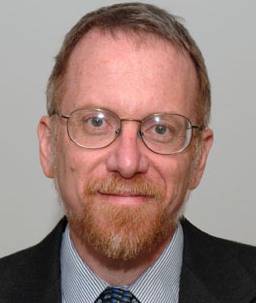Meet EPA Researcher Richard Judson, Ph.D.

How does your science matter?
People are exposed to tens of thousands of chemicals. Many of those have never been tested and might never get tested using traditional methods. What we’re doing here is developing methods that can quickly evaluate these chemicals using human cells and computer models. These models can roll up all that information and predict potential toxicity concerns.
What are some projects you’re working on?
A specific project I’m deep into right now is understanding the effects of chemicals on the transcriptome of cells. i.e. the RNA levels for every gene. In just the last few years, it has become affordable to test thousands of chemicals in whole-genome transcriptomics assays, which measure the level of every gene in a cell, and how those levels change when subjected to a chemical treatment. I am part of a team in ORD that is doing the experimental and computational work in this area and trying to find the best ways to use this data to understand chemical safety and risk.
If you could have dinner with any scientist past or present, who would it be and what would you like to ask them about?
One of my heroes is Richard Feynman. When you study science, you kind of learn from the masters, memorize what they did, and then try to go and apply it. Richard Feynman was known for deriving everything from scratch himself. By doing that he would come up with entirely different ways to think about problems. His way of approaching things was always a little more visual, and so more intuitive. I would ask him what made him even think about doing it that way. What made him brave enough to say, “I won’t believe anything you tell me until I prove it to myself”?
When did you first know you wanted to pursue science as a career?
I started college as a chemical engineer – I grew up in Houston where there are a lot of chemical plants. The first semester of my sophomore year I was taking the first chemical engineering class and two quantum mechanics classes – one in chemistry and one in physics, and we were doing steam tables (don’t ask) in chemical engineering. At the end of the first few weeks, the professor said that that was all the math we would ever have to do as a chemical engineer. At the same time, we were doing all this cool math stuff in the other classes, so I just dropped the chemical engineering and decided what I really wanted was hardcore science.
Tell us about your background.
I attended Rice University in Houston and studied chemistry and physics. After graduating, I worked as a process engineer for an electronics company for a couple of years where I learned to make conductive paint for cathode ray tubes. That proved I had actually learned something in college, but it was pretty boring so I headed to graduate school at Princeton. During my first year, I did a rotation with this researcher who was a theoretician and just fell in love with that area, so I did theory in my PhD and my postdoc.
My first real job post grad school was at Sandia National Labs (one of the DOE weapons laboratories) where we had access to all of the big weapons-design supercomputers and were allowed to work on pretty much any problem we were interested in. I worked on projects ranging from designing radiation hardened integrated circuits, to designing drugs and modeling genes, to modeling collections of autonomous robots on the battlefield. Other people in the group were modeling clouds and tires and all other sorts of cool things. After that I spent a decade in biotech startups, where I ended up as the head of research and development for a company developing complex genetic diagnostic tests, before that company was bought out (because of a product I developed and put on the market).
How did you get started at the EPA?
After the biotech company was bought out, I joined EPA where I was one of the first hires through the Title 42 program (a program that allows us to hire senior scientists from industry and universities). It was fortuitous that things opened up at the time I was looking.
What do you like the most about your research?
I get to play with lots of data. It’s different from the kinds of physics research I started out doing, where data was very hard to come by. In those areas, you had to do a lot of very complicated theory just to model a little bit of data. Here in biology, there’s just tons of data and even simple models can be useful to help understand it.
If you were not a scientist what do you think you would be doing?
My mother always wanted me to be a doctor. I think that’s probably what I would have been if I hadn’t gone into science.
Any advice for students considering a career in science?
Any kind of science today involves dealing with a lot of data. You should at least take one programming class and learn how to do simple programming. It seems that not many people are willing to do that, so that would definitely give you a leg up.
Editor's Note: The opinions expressed herein are those of the researcher alone. EPA does not endorse the opinions or positions expressed.
